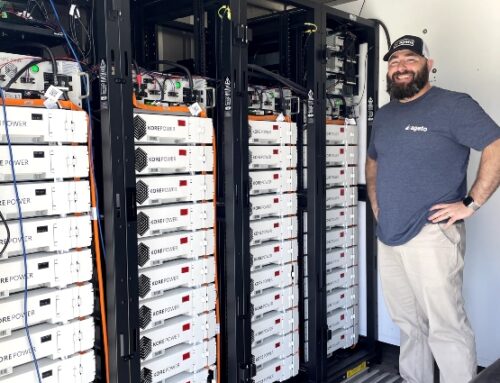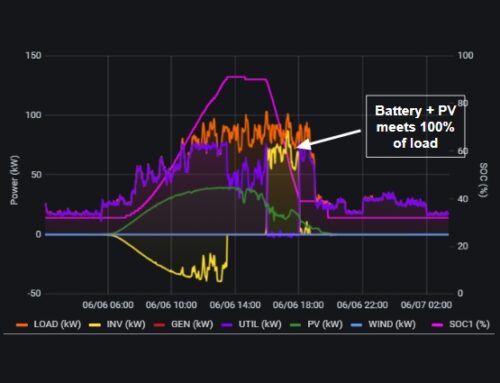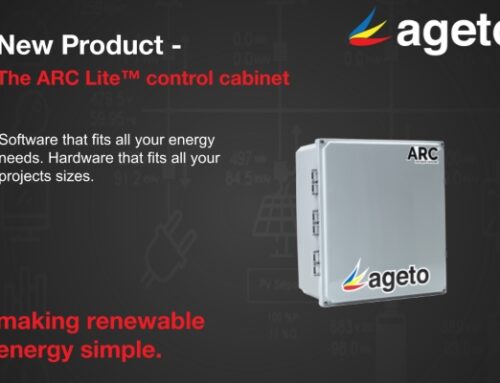From fires to heat waves to hurricanes, natural disasters and their effects on access to reliable power have become a fact of life for many. No community is more familiar with these challenges than the people of New Orleans, Louisiana. As a city highly vulnerable to hurricanes, keeping the power on in the face of high winds, flooding and fire brought by these storms has been a struggle as old as power in New Orleans. The answer many are turning to is solar battery storage systems. This is the very solution implemented at the St. Peter Apartments, a renewable energy resilient microgrid in the heart of New Orleans controlled, optimized, and operated by the Ageto ARC microgrid controller, which powered the facility through the widespread outages after hurricane Ida.
In the modern age, no one should have to go days without power, especially when we have the technology available to avoid it. As we turn away from the carbon based fuel solutions of the past in favor of more sustainable energy technologies, solar battery storage systems, also known as renewable energy microgrids, are increasingly becoming the preferred solution. Solar power storage solves multiple issues when it comes to power reliability, primarily because it is localized energy generation. From generation to transmission to distribution, there are many potential failure points in the wider electric grid, largely unavoidable for a machine of this size. With the solar, battery storage system, and controls all operating on-site, many of those pain points that make the wider electric grid vulnerable to disaster are solved. All the while producing 100% clean energy.
In 2020, SBP, a non-profit for national disaster resilience and recovery, and clean energy provider Solar Alternatives, partnered to bring Louisiana its first net-zero commercial facility and the state’s first commercial microgrid. St. Peter apartment provides housing for veterans and mixed-income residents. The 50-unit apartment complex showcases the positive impacts of solar power storage on community resilience and mitigating climate change while offering affordable electricity to residents.
Since it was commissioned in the summer of 2020, the solar power battery storage microgrid has carried the residents of the building through multiple hurricanes, keeping the lights on for days while neighbors went dark. The most severe outage to date, has by far been Hurricane Ida in August 2021. The second most intense hurricane on record in the state behind Katrina knocked power out in some areas for nearly a month. Thanks to the solar microgrid on the roof, however, the residents of St. Peter remained powered.
On the roof sits 210 kW of solar power. Storage sits in the parking lot with 440 kWh of energy sitting behind a 125 kW inverter. The solar battery storage system provides the required power, but it is the Ageto ARC Controller that harmoniously orchestrates its performance. When grid-tied, the ARC Controller optimizes the system to lower the cost of electricity for the residents through demand charge management and time-of-use energy arbitrage, while reserving a portion of the battery for unforeseen outages. Adding in power resilience or islanding operations to a grid-tied microgrid, greatly increases the complexity both in system control and design. When a grid failure occurs, the utility-grade protective relay physically islands the solar microgrid from the utility through a contactor. The ARC controller then calls for the energy storage system to start in grid forming mode setting voltage and frequency setpoints for the solar to follow.
When the sun comes up, the solar energy meets the facility load, using the excess power to charge the energy storage system. If the solar power storage becomes full and can no longer be charged, the Ageto ARC Controller sends active solar curtailment setpoints to the solar inverters on a second by second basis to follow the facility load with solar without overpowering the system.
The energy storage system is not sized to meet the full load overnight. Unfortunately, at current battery prices, this is the case for many budget-constrained projects. While many facilities have solar, solar alone cannot power a grid as it has no grid-forming resource to follow. Adding a solar power storage system means that solar power can be utilized and captured. When the battery reaches a low state of charge, the facility load is disconnected from the microgrid panel overnight, keeping the solar power storage system online to power the system the next day. This gives residents the opportunity to cook and charge devices for many hours. With this methodology, power was provided to the residents for multiple days in a row before the utility came back online, while neighbors were in the dark.
SBP showcases the feasibility of these renewable-only solar battery storage systems. At a 100% renewable energy make-up, this system provided critically needed backup power during a multiple day utility outage caused by Hurricane Ida. This impressive accomplishment was actually the third time the system provided backup power since its commissioning during as many hurricane-caused utility outages.
These solar energy storage system projects are effective and currently deployable solutions to natural disaster power outages. As we see battery prices continue to drop, and funding increase, we expect to see larger backup energy storage systems to carry larger loads for longer moving communities to cleaner, cheaper and more reliable energy.




